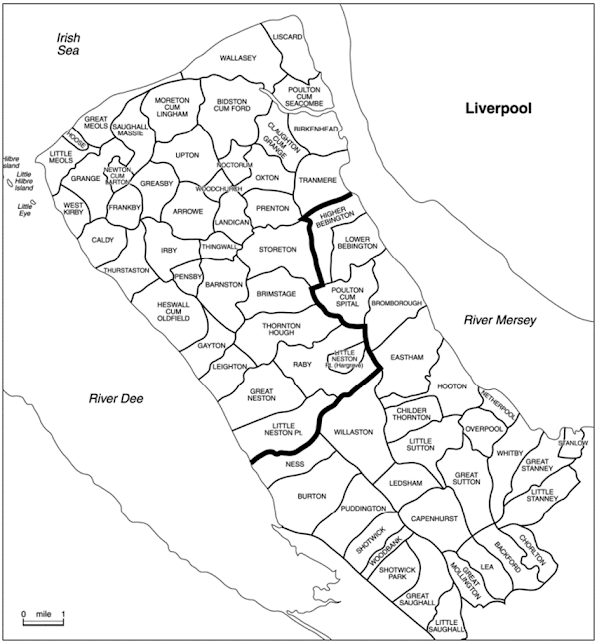Wirral minor and field names

Wirral parish map (19 th cent.). The bold line demarks the approximate boundary of the 10 th century Norse enclave, based on baronial manor holdings and place names. Courtesy of Chester and Cheshire Archives & Local Studies. The Wirral peninsula in north-west England was once home to a vibrant colony of Scandinavian settlers, many of whom were Norsemen expelled from Ireland. The arrival of one group was led by Ingimund in 902, but there were others, including Danes. The intensity of the settlement is borne out by the distribution of major or settlement names in Wirral, such as Arrowe, Caldy, Claughton, Gayton, Larton, Lingham, Mollington Torold, Ness, Neston, Storeton, Thingwall, Thurstaston, Tranmere, the -by names (Frankby, Greasby, Helsby, Irby, Kirkby in Wallasey, Pensby, Raby, West Kirby, Whitby and the now lost Haby, Hesby/Eskeby, Warmby, Kiln Walby, Stromby and Syllaby) and the Norse-Irish Liscard and Noctorum. Some further settlement names, such as Birkenhead, Hesw